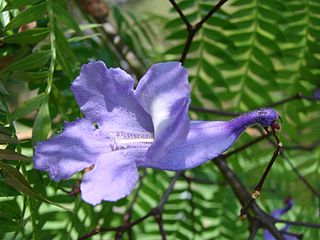
Jacaranda is a genus of 49 species of flowering plants in the family Bignoniaceae, native to tropical and subtropical regions of the Americas while cultivated around the world. The generic name is also used as the common name.

Paullinia is a genus of flowering shrubs, small trees and lianas in the soapberry family, Sapindaceae and typical of tribe Paullinieae. It is native to tropical South America, Central America and the Caribbean.

Alectryon is a genus of about 30 species of trees and shrubs from the family Sapindaceae. They grow naturally across Australasia, Papuasia, Melanesia, western Polynesia, east Malesia and Southeast Asia, including across mainland Australia, especially diverse in eastern Queensland and New South Wales, the Torres Strait Islands, New Guinea, the Solomon Islands, New Caledonia, New Zealand, Vanuatu, Fiji, Samoa, Hawaii, Indonesia and the Philippines. They grow in a wide variety of natural habitats, from rainforests, gallery forests and coastal forests to arid savannas and heaths.
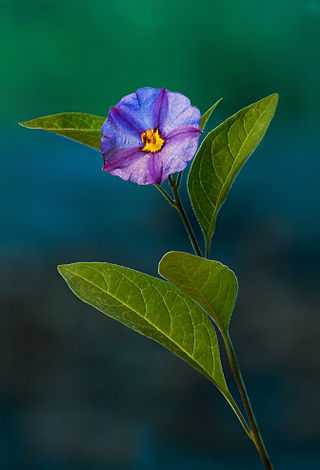
Lycianthes is a genus of plants from the nightshade family (Solanaceae), found in both the Old World and the New World, but predominantly in the latter. It contains over 150 species, mostly from tropical America, with 35-40 species in Asia and the Pacific.

Allophylus is a genus within the plant family Sapindaceae. It includes 211 species with a pantropical distribution.
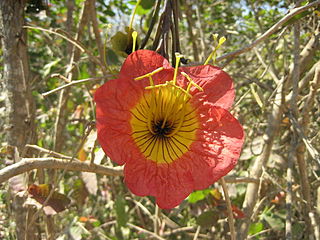
Fernandoa is a genus of plants in the family Bignoniaceae; species are found in tropical Africa, India and south-east Asia.
Placodiscus is a genus of plant in family Sapindaceae. The following species are accepted by Plants of the World Online:
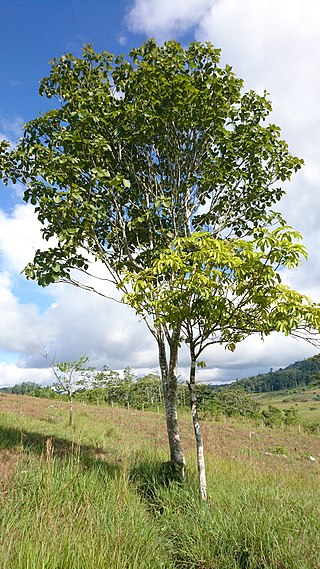
Simira is a genus of plants in the family Rubiaceae. The genus was first published by French pharmacist and botanist Jean Baptiste Christophore Fusée Aublet in Hist. Pl. Guiane vol.1 on page 170 in 1775.

Ludwig Adolph Timotheus Radlkofer, was a Bavarian taxonomist and botanist.

Lepisanthes is a genus of 31 species of trees or shrubs native to tropical Africa, south and southeast Asia, Australia, and Madagascar.
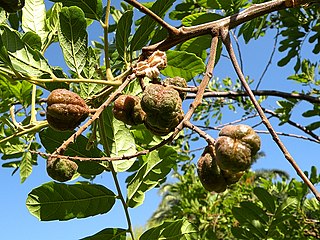
Cupania is a genus of flowering plants in the family Sapindaceae. It includes 58 species native to the tropical Americas, ranging from Mexico and south Florida through Central America, the Caribbean, and South America to northern Argentina.

Mansoa is a genus of tropical, flowering vines in the family Bignoniaceae.
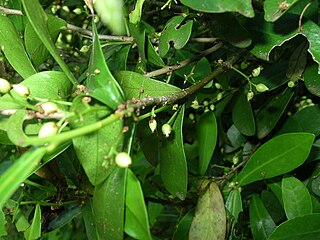
Daphnopsis is a plant genus in the family Thymelaeaceae. It includes 72 species native to the Neotropics. They are shrubs and small trees with tubular or bell-shaped flowers. Individuals are dioecious, with male and female flowers produced on separate trees.

Thouinia is a genus of flowering plants in the family Sapindaceae. The genus is named for André Thouin, a French botanist. As of 2020 Kew's Plants of the World Online lists 27 species in the genus:

Amphilophium is a genus of flowering plants in the family Bignoniaceae, native to South America. Amphilophium crucigerum has escaped from cultivation elsewhere, and has become an invasive weed in Australia.
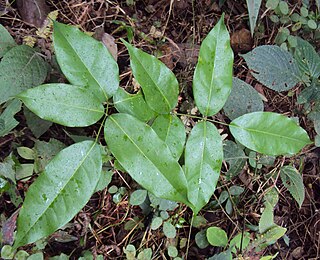
Rourea is a genus of plants in the family Connaraceae. They are found worldwide across the tropics and subtropics.

Sapindoideae is a subfamily of flowering plants in the soapberry family, Sapindaceae. It includes a number of fruit trees, including lychees, longans, rambutans, and quenepas.

Matayba is a genus of flowering plants in the family Sapindaceae.
















